On average, nearly 25% of RFQs contain critical errors, leading to delays, missed bids, or overpriced deals. The irony? Most of these mistakes are avoidable with the right tools.
Learning how to create a request for quotation (RFQ) with AI isn’t just about automation; it’s about turning a risky, error-prone process into a streamlined engine for accuracy, speed, and supplier trust.
In this article, we will:
- Show you how to streamline procurement with 7 simple AI steps
- Compare AI vs traditional RFQs to reveal time and cost savings
- Highlight common RFQ mistakes and how to avoid them with AI
AI-powered RFQ creation: Streamline your procurement in 7 simple steps
Creating a request for quotation with artificial intelligence transforms what used to be a weeks-long manual process into an efficient, automated workflow. Modern AI tools can reduce RFQ creation time by up to 70% while improving accuracy and supplier matching quality.
Let's walk through each step to get you started with AI-powered procurement today.
Step 1: Choose your AI RFQ platform and set up
Selecting the right AI platform forms the foundation of your automated procurement process. The setup phase typically requires careful attention to user permissions and system integrations to ensure smooth operations from day one.
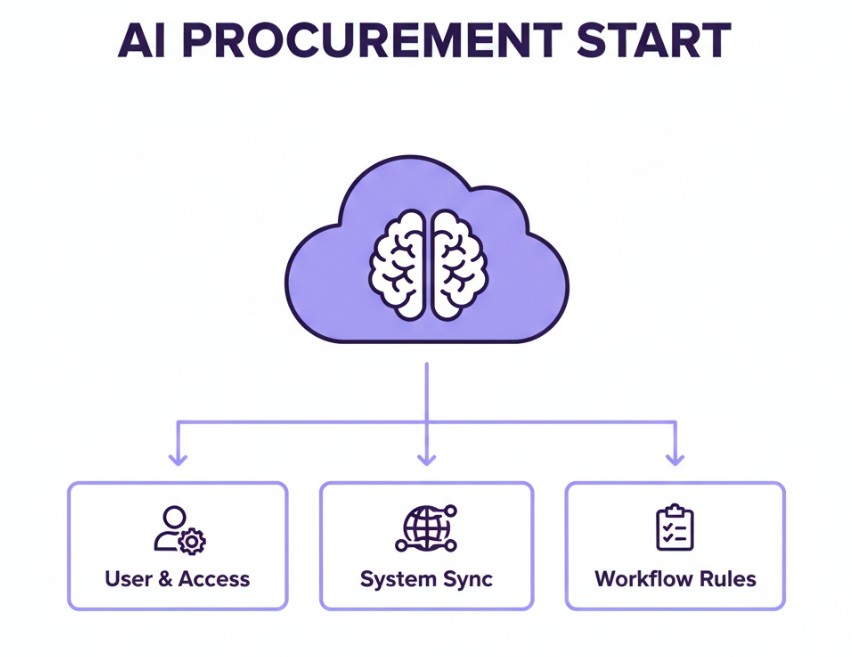
- Select an AI tool: Choose from ProQsmart, AutoRFP.ai, ClickUp Brain, or QorusDocs based on your budget and feature needs
- Create account and configure: Set up user permissions, company profile, and basic settings
- Import supplier database: Upload existing vendor contacts or integrate with your current CRM system
- Configure approval workflows: Establish review chains and authorization levels for different purchase amounts
Pro tip: Start with a free trial whenever possible to test the platform's user interface and feature set before committing to annual contracts. Most platforms offer 14-30-day trial periods.
Step 2: Define your requirements using AI assistance
AI excels at understanding natural language requirements and converting them into structured procurement specifications. This step eliminates the guesswork and ensures you capture all necessary project details from the start.
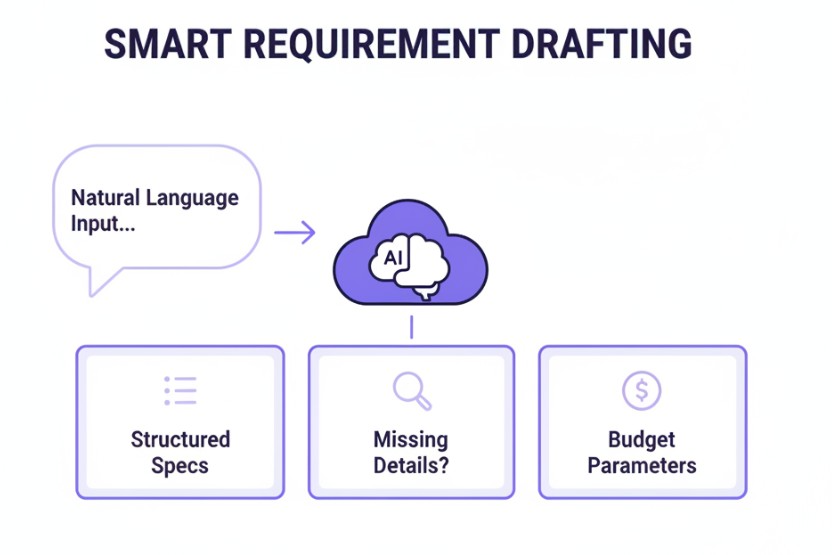
- Use natural language input: Type or speak your project requirements in plain English without technical jargon
- AI requirement extraction: Let the AI parse and categorize your needs automatically into relevant sections
- Specification completion: AI prompts for missing technical details using a project charter as the reference point for timelines and standards.
- Budget parameters: Input budget ranges and cost constraints to guide supplier recommendations
Example: Instead of writing complex specifications, simply input: "I need 500 custom printed t-shirts, cotton blend, delivered by March 15th, budget $2,000-3,000." The AI will expand this into detailed requirements.
Step 3: Generate RFQ document with AI templates
Template generation represents where AI truly accelerates the creation process. Smart algorithms select appropriate templates and populate them with your specific requirements, creating professional RFQ documents in minutes rather than hours.
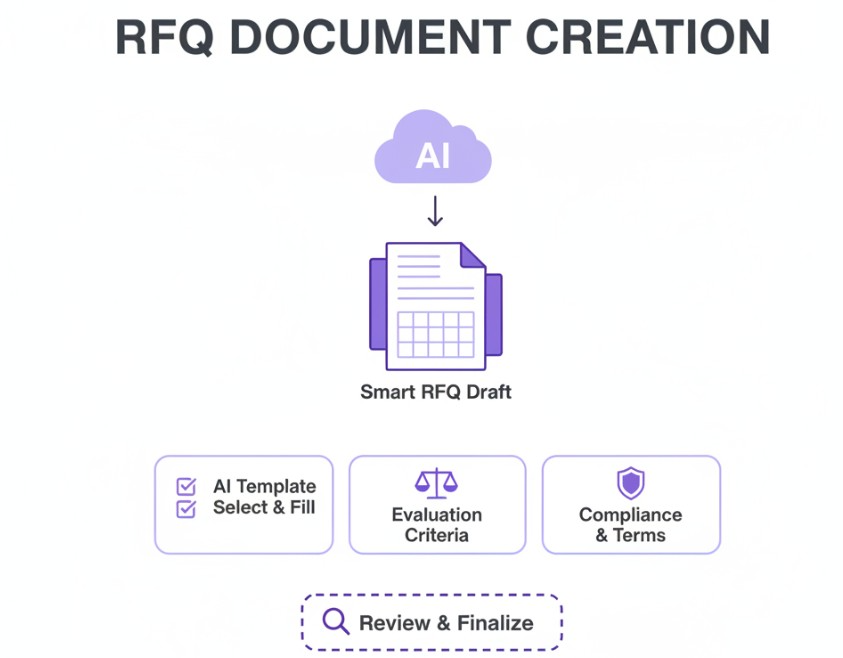
- Template selection: AI suggests industry-specific templates based on your requirements and purchase category
- Auto-populate sections: AI fills in project details, technical specifications, and standard terms and conditions
- Customize evaluation criteria: Define your scoring methodology (example: price 40%, quality 30%, delivery 30%)
- Add compliance requirements: Include necessary certifications, insurance requirements, and regulatory standards
- Review and edit: Refine AI-generated content for accuracy and add any company-specific requirements
Pro tip: Always review the evaluation criteria weights to ensure they align with your project priorities. Price shouldn't always be the dominant factor.
Step 4: AI-powered supplier matching and selection
Intelligent supplier matching eliminates hours of manual research by automatically analyzing your vendor database and external supplier networks. The AI considers multiple factors beyond basic capability matching.
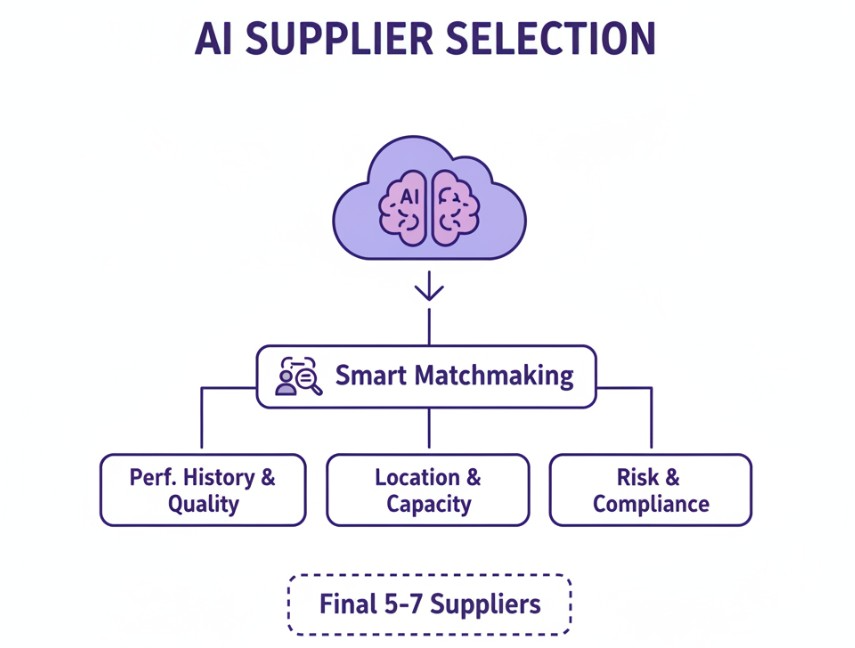
- Automatic supplier scoring: AI analyzes your vendor database for capability matches based on product/service requirements
- Performance history review: AI pulls past performance data, delivery records, and quality ratings
- Geographic and capacity filtering: AI suggests suppliers based on location proximity and current availability
- Risk assessment: AI evaluates financial stability, compliance history, and business continuity factors
- Final selection: Choose 3-8 qualified suppliers from AI recommendations for optimal competition
Important: Aim for 5-7 suppliers in your final selection to balance competition with manageable response volume.
Step 5: Automated distribution and communication
Distribution automation ensures consistent communication while personalizing outreach for each supplier. This step eliminates manual email management and reduces the risk of communication errors.
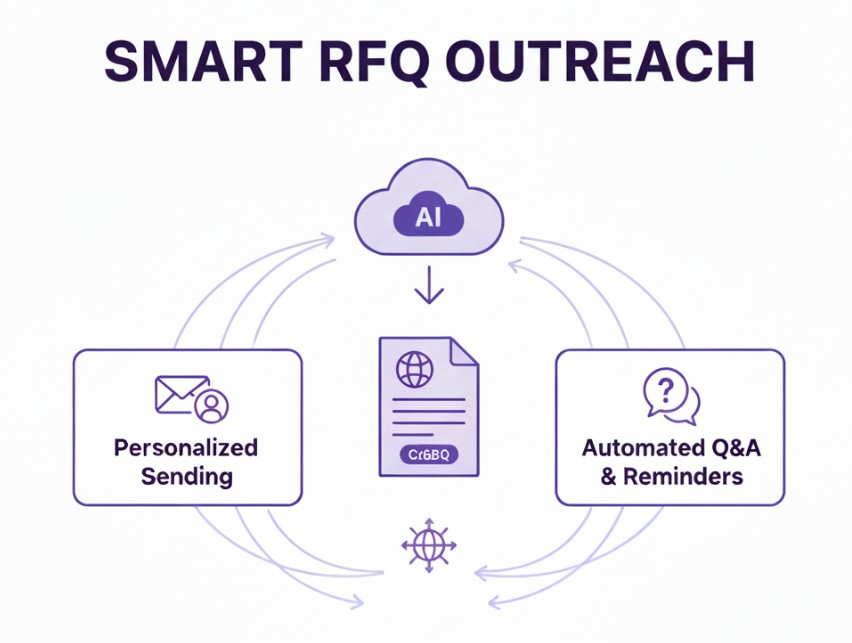
- Personalized sending: AI customizes cover letters and communications for each supplier relationship
- Multi-channel distribution: Send via email, supplier portals, integrated procurement platforms, or your marketing agency project management tool.
- Delivery confirmation: Track when suppliers receive and open RFQ documents in real-time
- Automated reminders: Set up follow-up sequences for non-responses at predetermined intervals
- Q&A management: AI helps respond to supplier clarification requests using your knowledge base
Pro tip: Set reminder sequences at 3, 7, and 10 days before the deadline to maximize response rates without overwhelming suppliers.
Step 6: Monitor responses and AI-assisted analysis
Response monitoring provides real-time visibility into your RFQ process while automated analysis ensures no critical details are missed. This step transforms response management from reactive to proactive.
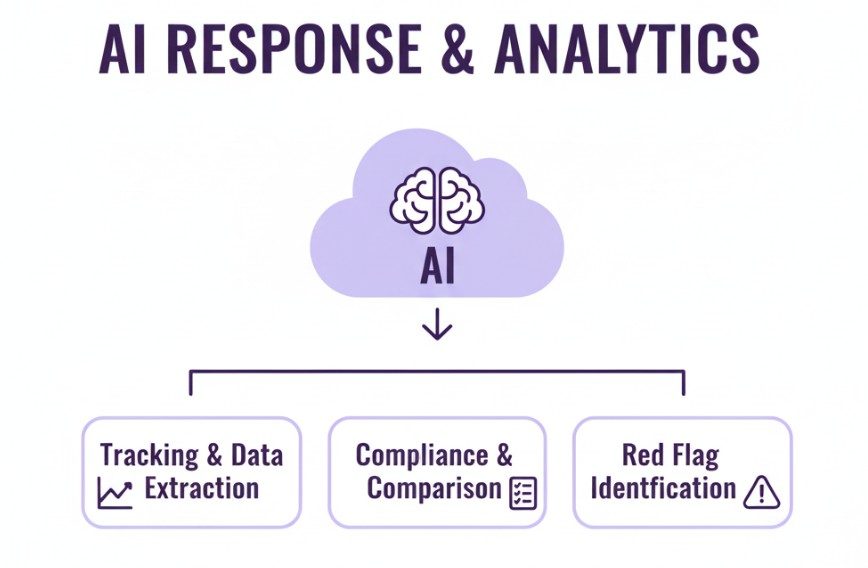
- Response tracking: Real-time dashboard shows submission status, completion rates, and time remaining
- Automated data extraction: AI pulls key information from supplier responses into standardized comparison formats
- Compliance checking: AI verifies all required sections are completed and mandatory documents included
- Comparative analysis: Side-by-side comparison tables generated automatically for easy evaluation
- Red flag identification: AI highlights unusual pricing, concerning terms, or incomplete information
Example: If one supplier's pricing is 30% below that of others, the AI flags this for further investigation rather than automatic acceptance.
Step 7: AI-driven evaluation and supplier selection
The final evaluation leverages AI to apply consistent scoring criteria while identifying potential risks and hidden costs. This ensures objective decision-making based on your predefined requirements.
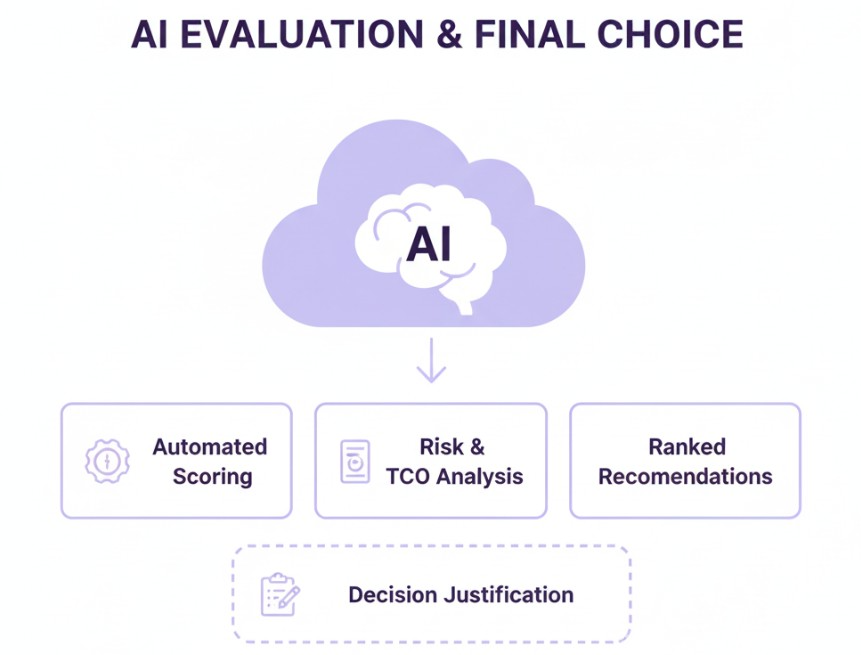
- Automated scoring: AI applies your evaluation criteria weights to all supplier responses objectively
- Risk analysis: AI assesses delivery capability, financial stability, and project execution probability
- Total cost calculation: AI factors in hidden costs, taxes, shipping, and long-term maintenance implications
- Recommendation generation: AI provides ranked supplier recommendations with detailed reasoning
- Decision documentation: AI creates comprehensive selection justification reports for approval workflows
Pro tip: Always review the total cost of ownership calculation, not just the initial quote price, to make truly informed decisions.
With these seven steps, you've transformed traditional procurement into an intelligent, automated process that delivers better results in less time.
AI vs traditional RFQ: Which method saves more time and money?
The choice between AI-powered and traditional RFQ processes can make or break your procurement efficiency. While traditional methods rely on manual effort and experience, AI automation delivers measurable improvements in speed, accuracy, and cost reduction.
Here's exactly how they compare across key performance metrics:
Complete comparison: AI RFQ vs traditional methods
Key decision factors: When AI RFQ makes financial sense
Traditional RFQ methods become cost-prohibitive when your organization processes more than 10 RFQs monthly or spends over $30,000 annually on procurement activities. AI automation delivers measurable returns across three critical areas:
- Volume threshold: Organizations processing 15+ RFQs monthly see immediate productivity gains
- Complexity level: Multi-supplier, multi-criteria evaluations benefit most from AI standardization
- Team capacity: Small procurement teams (1-3 people) gain the biggest efficiency multiplier
- Cost structure: Annual procurement budgets above $50,000 typically justify AI investment within 90 days
If manual RFQ processing currently costs your organization more than $1,500 per month in staff time, AI automation pays for itself in the first quarter.
AI RFQ pitfalls: Costly mistakes that sabotage procurement success
Even with advanced AI tools, procurement teams often stumble into avoidable traps that undermine their results. These common mistakes can turn a promising AI implementation into a costly disappointment, but each one has a straightforward solution.
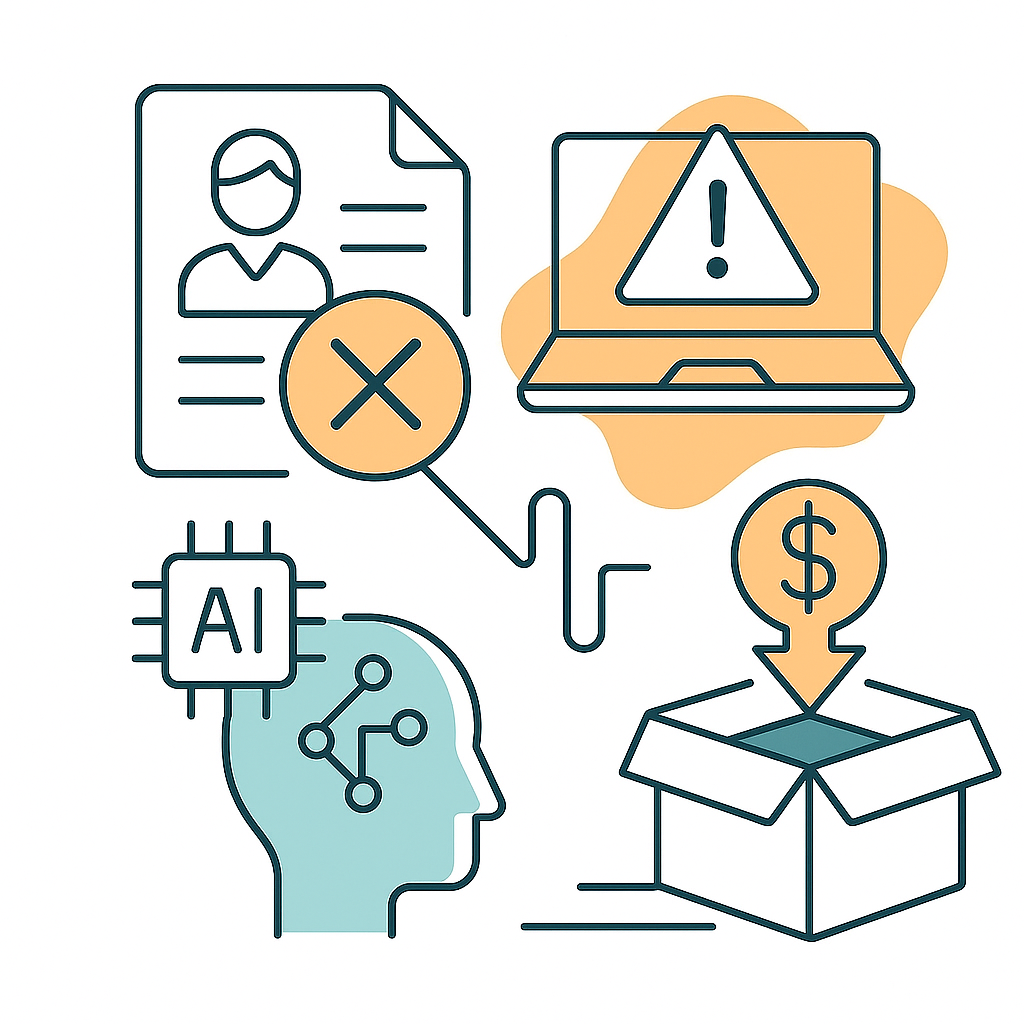
Over-relying on AI without human oversight
Letting AI make final supplier decisions without human review assumes the technology is infallible. AI lacks business context and relationship insights that experienced procurement professionals bring to the table.
Implementation best practices:
- Implement a hybrid approach where AI handles analysis while humans make final decisions
- Review AI-generated supplier rankings and question unusual recommendations
- Apply your industry knowledge to validate results before committing to contracts
- Set up approval workflows that require human sign-off for contracts above certain thresholds
Poor supplier database quality
Feeding AI systems with outdated, incomplete, or inaccurate supplier information leads to poor matching and recommendations. When your supplier database contains old contact information or missing capability details, even sophisticated AI algorithms cannot deliver quality results.
Database cleanup essentials:
- Dedicate time to database cleanup before AI implementation begins
- Verify contact details and update capability profiles for all active suppliers
- Standardize data formats across all supplier records for consistency
- Establish ongoing maintenance procedures to keep supplier information current
- Regular quarterly reviews to remove inactive suppliers and add new ones
Inadequate evaluation criteria setup
Using generic scoring weights for every RFQ instead of customizing criteria creates suboptimal results. Different purchases require different priorities based on project criticality and business impact.
Smart criteria setup:
- Customize evaluation criteria for each procurement category based on business impact
- Adjust weights based on project criticality, risk tolerance, and strategic importance
- Use 60% quality, 25% delivery, 15% price for mission-critical components
- Reverse those weights for commodity purchases where cost matters most
- Document your reasoning for different weighting schemes for future reference
Template customization errors
Using AI-generated templates without proper customization for your industry or company policies creates incomplete RFQs. Standard templates often miss critical requirements that lead to irrelevant supplier responses.
Template optimization strategy:
- Create template libraries tailored to your common purchase categories
- Include industry certifications, company-specific legal terms, and technical requirements
- Treat AI templates as starting points, not finished documents
- Always review templates for completeness before distribution to suppliers
- Test templates with a small group of trusted suppliers before wide distribution
Success tip: Start small with pilot projects to test your AI RFQ setup before rolling out company-wide. This allows you to identify and fix these common mistakes without impacting critical procurement activities.
Scale procurement efficiency beyond manual limits
Creating RFQs no longer has to drain time, money, and energy. By adopting AI-powered tools, you can cut errors, accelerate supplier matching, and gain consistent evaluation insights that manual methods simply can’t deliver. The key is combining automation with smart human oversight to ensure accuracy and trust.
Start small, refine your process, and scale with confidence, because the future of procurement belongs to those who leverage AI to work smarter, not harder.


%20(1).jpg)
_light%201.png)





